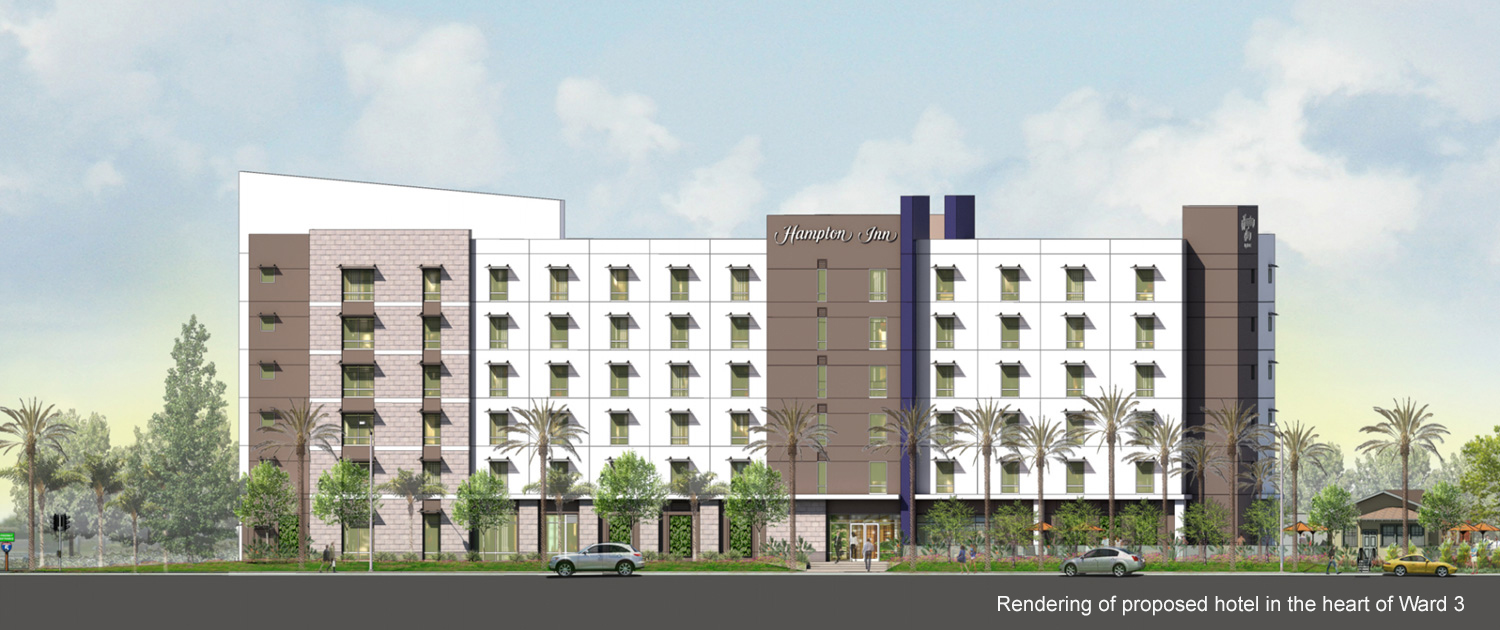
Working together to create a thriving Santa Ana
Small business owners are the catalysts for real change and broad community empowerment. These are some of Katz’s ideas to help drive economic recovery during and after the COVID-19 pandemic.
1. Create More Jobs Through a Better Santa Ana Business Environment.
Santa Ana suffers from a weak image among the regional business sector which reflects on a poorly motivated business community. We need to develop a better business ecosystem where networking is easy. Where matching capital and entrepreneurs is facile.
2. Keep Important Employers from Leaving Our City
The economics of the City will stagnate if only the same dollar circulates. We need to focus on attracting and keeping companies the generate dollars from outside the City. The ideas listed on this page will help. However, we also need to partner with SAUSD to drive a better story about Santa Ana’s public education system. We need to support neighborhoods and the SAPD to make our City safer. We need to work with developers and residents to revitalize our City’s structures to augment its charm and character highlighting our City’s uniqueness.
3. Provide Assistance to Start Up Businesses
This department would serve entrepreneurs and small business owners in the early stage of a start-up business’s life cycle. We should aim to provide best-in-class coaching, in-demand services, and relevant programs to foster the success of small businesses.
Through quality programming, personalized one-on-one coaching, and networking opportunities that build valuable business relationships, we could provide the tools needed for start-ups to successfully navigate their business journeys.
4. Develop an Innovative Business Community
The hallmark of thriving regions is rooted in an innovation economy – jobs generated in fields that require skills in science, technology, engineering and math (STEM). These jobs provide a diversity of other important professions in the arts and humanities.
If Santa Ana is going to accelerate its economic redevelopment, it must have some focus on the innovation industries. Manufacturing jobs has a multiplier of creating 1.6 additional new jobs. Innovation jobs have a multiplier of five additional jobs (three of which are service jobs and two that are high-paying professional jobs).
Yet, STEM industries should not be our only focus. A young adult leaving high school today is entering one of the toughest labor markets in recent history. But there is opportunity out there. If you have a skill that is in demand, you will be in demand like never before. Currently, there is a reinvigorated and enthusiasm around the basics of simply learning a trade that is absolutely in demand – of being essential. Grown-ups are finally having a serious conversation about what constitutes a good job. Right now, if you are a tradesman with a good work ethic, high paying jobs await you. For a city filled with aging, historic homes, we need these artisans more than ever.
5. Continue to grow Downtown businesses
Santa Ana, like most cities, will benefit from a vibrant downtown. It creates tax dollars and attracts/keeps young talent in the city which in turn attracts businesses. Thanks to courageous business owners, visionary developers and the work of Santa Ana, DTSA has seen a rebirth during the last 10 years. We need to continue and augment programming that brings people to downtown on a regular basis. We have developed a budding art scene. Katz envisions growing the arts and incorporating music making Santa Ana the Austin and Nashville of Southern California.
Katz believes that if there is a place in Santa Ana that can handle – and needs – high density “luxury” residential spaces, it is DTSA; so that retail and entertainment can do better. However, the key is to offer a variety of residential options. When an economy suffers a downturn, non-residents will stop coming. This risk can be managed if customers live nearby.
6. Create a Better Partnership with Santa Ana College
Santa Ana is fortunate to have Santa Ana Community College. Chapman is a few miles away. UCI and CSUF are in close proximity. Katz believes that developing a strong and visible relationship with these universities will offer Santa Ana greater stability. These colleges provide intellectual capital (students and professors) which often turn out entrepreneurs. Strong cooperation among universities, government and the private sector is critical to the emerging tech and business service corridor developing outside Santa Ana such as in the Texas cities of Austin and San Antonio.

7. Creating More Affordable Housing
Inclusive development considers whether development progress is sufficiently widespread for the majority of a population to benefit. A nondiscriminatory, inclusive, and integrated development approach ensures that all people (including those who face discrimination and thus may have limited access to our City’s benefits, legal protections, or social participation) are fully included and can actively participate in and benefit from development processes and activities.
On the supply side, it means not just building more housing but focusing on much-needed affordable and workforce housing. On the demand side, it means boosting the incomes of blue-collar workers, low-paid service workers, and the truly disadvantaged by lifting local minimum wages, upgrading jobs, and providing housing vouchers where necessary.
Paid for by
Jeffrey Katz for Santa Ana City Council 2024 FPPC ID #1467072
